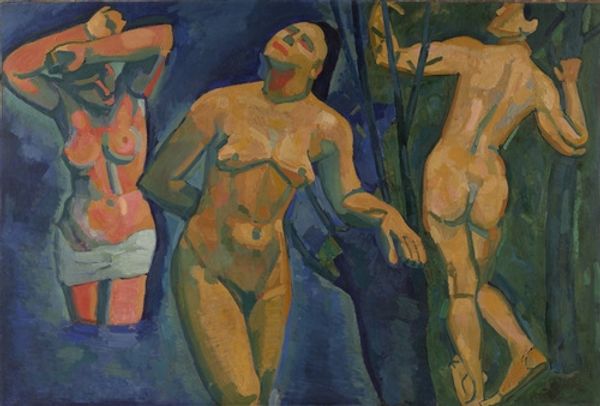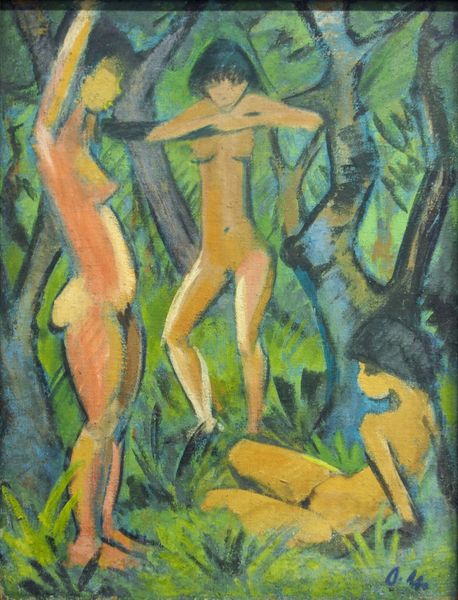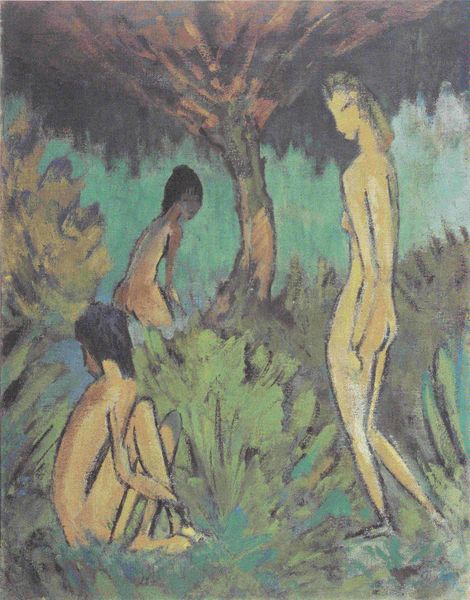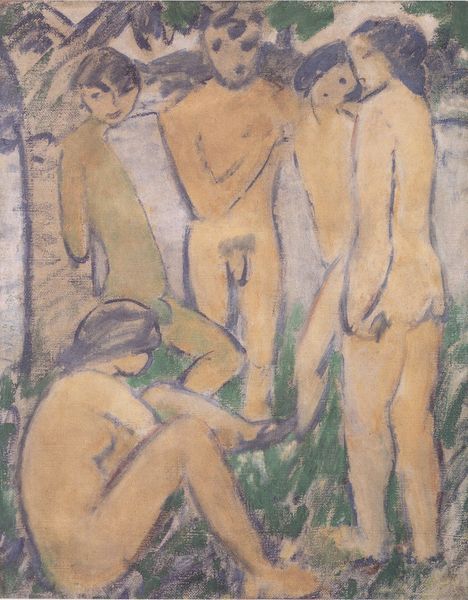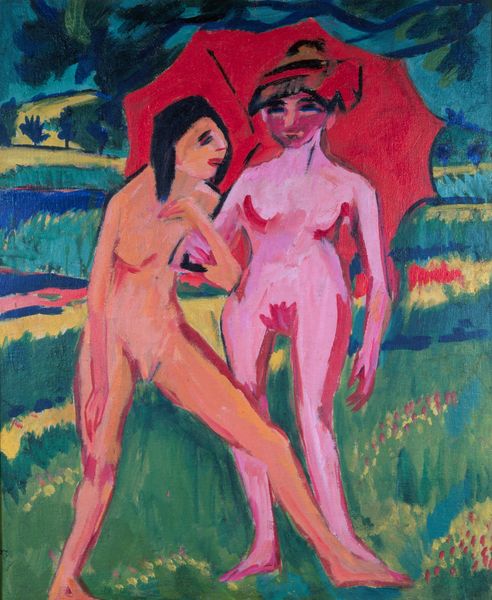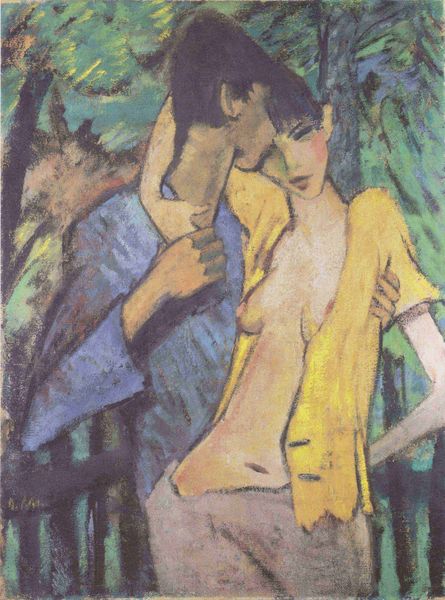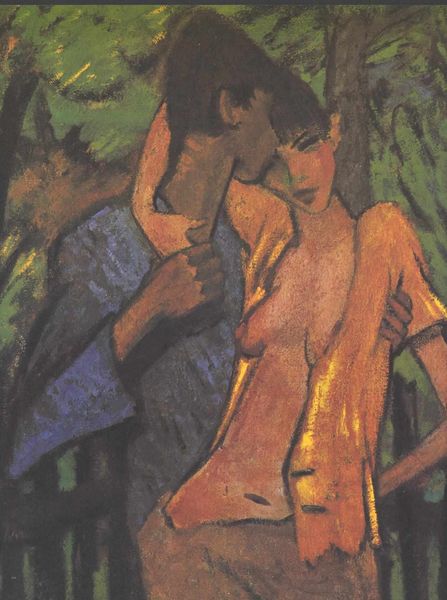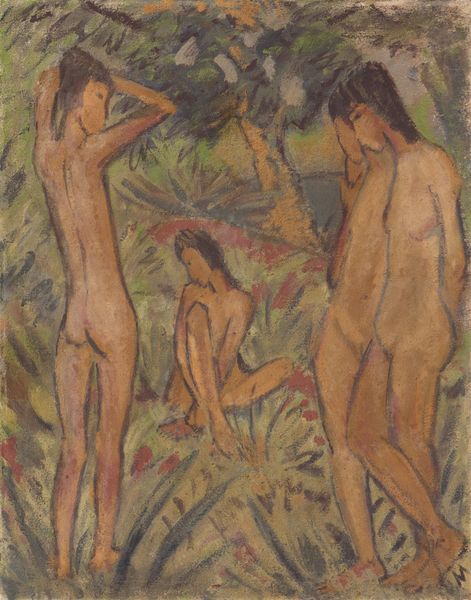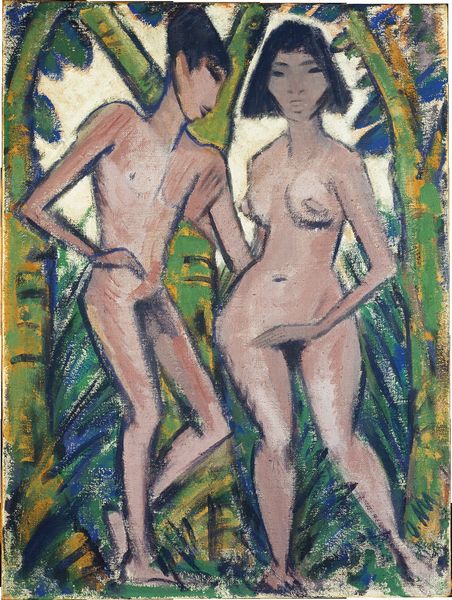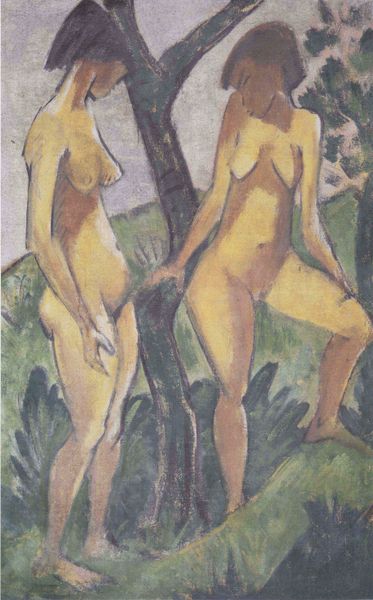
Dimensions: support: 765 x 845 mm frame: 912 x 950 x 64 mm
Copyright: © DACS, 2014 | CC-BY-NC-ND 4.0 DEED, Photo: Tate
Curator: This is Karl Schmidt-Rottluff’s “Two Women,” currently held at the Tate. The dimensions are roughly 76 x 84 cm. Editor: Stark. Those angular forms and earthy tones—they convey a feeling of unease, almost… primal. Curator: Rottluff, as part of Die Brücke, was interested in the materials themselves. Note the visible brushstrokes and how the medium contributes to the raw emotionality. Editor: The figures are so stylized, almost mask-like. Do you think he was drawing on African or Oceanic art? The faces seem less about individual identity and more about archetypes. Curator: It’s likely. The Expressionists certainly engaged with non-Western art. The social context of that engagement is complex, a negotiation of power and influence. Editor: Absolutely. Seeing the figures as symbols, though, I feel a strong sense of introspection, a mirroring, perhaps, of the viewer's own subconscious. Curator: A fascinating interpretation. Ultimately, viewing artwork like this reminds us how artistic expression is always enmeshed in production and cultural exchange. Editor: Yes, and how symbols speak across time.
Comments
tate 6 months ago
⋮
http://www.tate.org.uk/art/artworks/schmidt-rottluff-two-women-n06249
Join the conversation
Join millions of artists and users on Artera today and experience the ultimate creative platform.
tate 6 months ago
⋮
Although this work was painted in Hamburg, it was probably inspired by the artist’s regular summer visits to Dangast on the North Sea coast. The dunes, grasslands and fishing villages of this area appear in a number of Schmidt-Rottluff’s paintings. The mask-like faces of the two women may reflect Schmidt-Rottluff’s familiarity with masks from Cameroon. The artists of the Brücke group drew inspiration from the African and South East Asian artefacts in the Dresden Ethnographic Museum, which they saw as embodying an unspoilt and more authentic culture. Gallery label, July 2008
